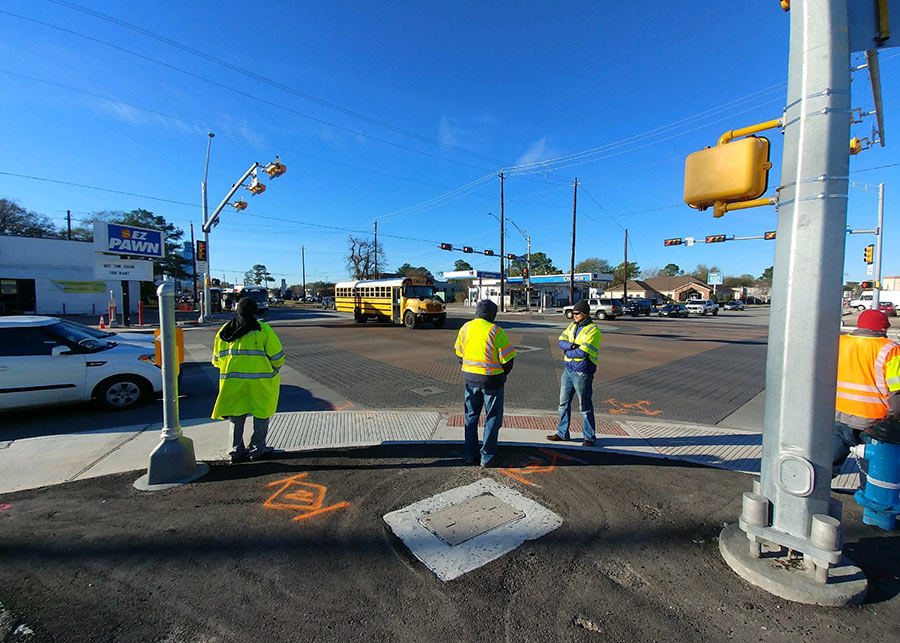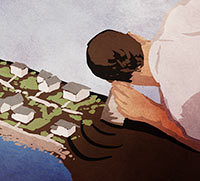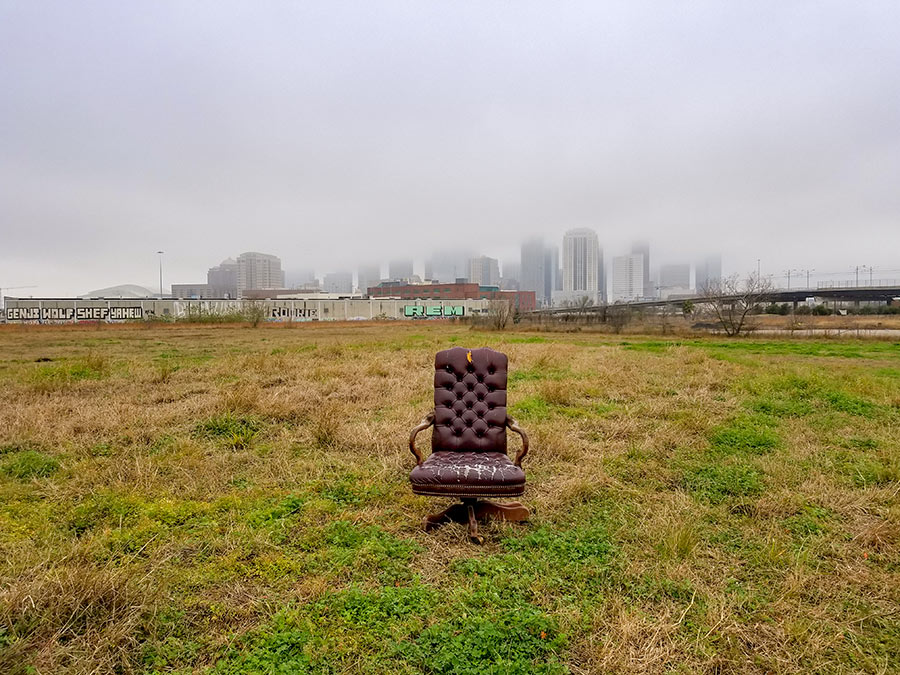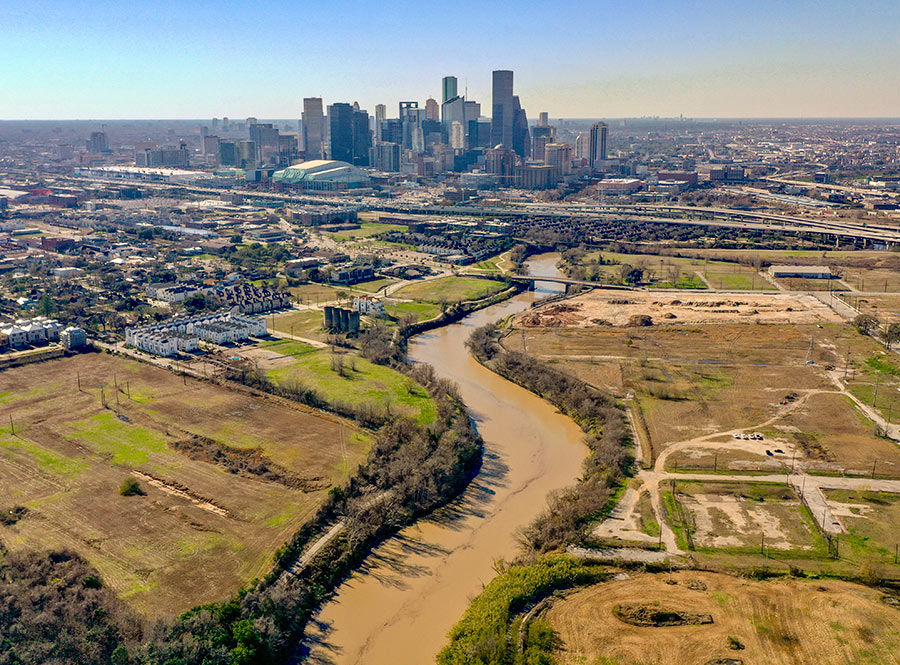TRANSPORTATION BUFFS ARE STAKING OUT HOUSTON’S MOST DANGEROUS INTERSECTIONS TO BETTER UNDERSTAND WHAT’S WRONG WITH THEM  A handful of intersection inspection personnel were out at Long Point Rd. and Gessner on Tuesday for their second round of roadside surveillance at what they’ve deemed one of the city’s most dangerous crossroads for pedestrians. The team — made up of an engineer from Houston’s public works department, a Federal Highway Administration rep, and members of local advocacy groups LINK Houston and Bike Houston, reports News 88.7’s Gail DeLaughter — has been scrutinizing what goes on out there and at 5 other intersections where a 2017 map showed pedestrians take a beating from cars: Fondren and West Bellfort, Bissonnet and Wilcrest, Shepherd and Allen Pkwy, Taylor and Spring St., and Spur 527 and Holman St. What they’re paying attention to: traffic counts, the times of day that crashes occur, the usefulness of pedestrian traffic signals as well as “how long it takes to safely cross the street, and how cyclists use the roadway,” reports DeLaughter. After wrapping up observations at the end of this week, the group will submit a report to the city recommending changes that’d make each intersection safer. [Houston Public Media] Photo: LINK Houston
A handful of intersection inspection personnel were out at Long Point Rd. and Gessner on Tuesday for their second round of roadside surveillance at what they’ve deemed one of the city’s most dangerous crossroads for pedestrians. The team — made up of an engineer from Houston’s public works department, a Federal Highway Administration rep, and members of local advocacy groups LINK Houston and Bike Houston, reports News 88.7’s Gail DeLaughter — has been scrutinizing what goes on out there and at 5 other intersections where a 2017 map showed pedestrians take a beating from cars: Fondren and West Bellfort, Bissonnet and Wilcrest, Shepherd and Allen Pkwy, Taylor and Spring St., and Spur 527 and Holman St. What they’re paying attention to: traffic counts, the times of day that crashes occur, the usefulness of pedestrian traffic signals as well as “how long it takes to safely cross the street, and how cyclists use the roadway,” reports DeLaughter. After wrapping up observations at the end of this week, the group will submit a report to the city recommending changes that’d make each intersection safer. [Houston Public Media] Photo: LINK Houston





It would be interesting to understand if there is anything different with these intersections, or if it all just directly corresponds to elevated pedestrian usage in general and Houstonians just resoundingly suck at driving. I know where I’d put my money.
.
Get out of your cars people, not that we even care about your health, but it will go a long ways towards drivers respecting pedestrian usage more and keeping their eyes open.
I agree Joel- Far too few [in Houston] spend time on the opposite site of the windshield to get from A – B, including our elected and appointed officials in charge of making these decisions. The intersections in question are designed with vehicular volume and speed in mind- in other words, copious lanes, wide turning movements and long lights
The Shepherd at Allen Parkway intersection certainly is dangerous for pedestrians. Thankfully a couple years ago they added a pedestrian underpass below Shepherd which helps tremendously, but there still isn’t a great way to cross Kirby/Allen Parkway there.
Pedestrians suck at crossing streets safely, too.
– October 2018: “A Metropolitan Transit Authority train stuck and killed a man Thursday morning in the north Houston area, marking at least the fifth death along Houston’s light rail lines this year… The man stepped in front of a southbound train shortly before 10 a.m., just south of the rail’s crossing at Fulton and Crosstimbers, Metro spokeswoman Laura Whitley said. He was looking at a northbound train when he stepped in front of the southbound train.”
– Early 2017: “With more than 75,000 Super Bowl fans packed into NRG Stadium mere blocks away, an all-too-common Houston tragedy played out at a busy intersection of people and trains Sunday when a man on a bicycle was killed after turning into the path of a Metro train. Days earlier, a Rice University professor was struck and killed by a train while cycling to work near the busy Texas Medical Center.” (The professor wheeled her bike in front of the train she just had just gotten off of.)
– Too many times per year: Pedestrian is killed while trying to cross an Interstate highway on foot.
Except for Allen Parkway and Shephard, I wouldn’t get out of my car near any of those intersections. Of course safety of pedestrians is imperative but the tired old argument of “we just need people to walk more and drive less” isn’t the answer. I would gamble that anyone walking around Fondren and West Belfort either walks because they don’t have a car (but would prefer one), can’t or aren’t allowed to drive, or they are doing, ahem, “business” that necessitates walking along the street.
As a motorcycle rider, bicyclist and pedestrian I can tell you that the worst offenders have a cell phone glued to their ear. No amount of traffic study will fix that.
Washington Ave and Heights/Waugh intersection is another I’d point out. Too many cars flying around corners and a confusing sequence of turn signals. I wonder how the new H-E-B will contribute to the growing mix of pedestrians attempting to cross this intersection.
Agreeing with Eric on Shepherd and Allen Parkway. AP is just dangerous overall as well for Montrose and Waugh.
What’s wrong with Houston’s dangerous intersections? Houston DRIVERS !!! Who are on a gawd damn mobile phone ( can’t tell you how many times a-hole drivers on mobiles nearly crashed into me/&/or caused wrecks. @Eric: I live off Kirby & Troon Rd. and walk/cycle/run along Buffalo Bayou every day-weather permitting.. I take my life into my hands EVERY time .And have had drivers almost hit me or worse and I’ve cursed the d-bags using VERY colorful words. One Bubba stopped his huge pickup truck in the intersection in rush hour PM traffic .I kicked his big fat butt. And kept walking .. And the people who step in front on any bus or train is asking for it. I only cross the Main St. tracks when the train is at a minimum 5+ blocks away-on the other side of the platform…
I doubt there’s anything special about these intersections, other than there happen to occasionally be pedestrians in them. (You can’t run over what ain’t there!)
We design intersections to efficiently allow cars to move through, often at high rates of speed. And when people aren’t used to seeing pedestrians, they can forget that they need to yield to pedestrians when turning. If the goal is to kill fewer people, maybe let’s have intersections where cars have to slow down to turn (i.e. narrower lanes, sharper radii, no slip lanes), and signals that don’t require pedestrians to compete with turning vehicles.
If there were no pedestrians or bikes, there would be no problems. If you can’t afford a car just take the bus.
The sooner Houston starts switching busy intersection to roundabouts, the sooner accidents will fall and traffic, which never has to stop, will move more smoothly.
There are 35,000 roundabouts in France and 24,000 in England. They are on to something.
A big problem is the belief that each road needs to be as wide as possible. Why do we need 4 lanes each way on Westheimer? Aren’t they empty most of the time? Our city is largely designed for suburbs where everyone drives everywhere. Radical redesign would work, but we all know that ain’t gonna happen. We can’t even maintain the sidewalks and streets we already have.
@Tangyjoe
I don’t understand how speculating about the reasons that people walk is a reason to negate their right to safely do so.
@BigTex
I think you missed the part where I said “Of course safety of pedestrians is imperative”. My post wasn’t about not needing to protect pedestrians. It was about how the idea of getting everybody to walk and not drive is not the answer. I’m pro-pedestrian, I live in Montrose and walk a lot as well as do a lot of dog walking. I just hate the constant yammering about how Houston absolutely must reduce people’s desire to drive and make them walk more even if they don’t want to. People who want to walk will, people who don’t wont if they don’t have to.
On my morning commutes I seee people in other cars and most of the time it seems 80% are on their cell phones and a huge percentage of those aren’t just talking but looking down at their phones and/or typing or scrolling.
Discouraging driving while distracted should be a high priority.
@Tangyjoe
I failed to give your comment about pedestrian safety the attention it deserved, for which I apologize.
Your point about the commercial areas of SW Houston not being a magnet for pedestrians is also well-taken. Still, there are areas (Harwin, Hillcroft) where there’s a sufficient concentration of businesses to make walking from one to another feasible. As things stand, if someone literally wants to go next door, he has to get in his car, get back on a busy street, and find another parking space. It seems absurd that someone has to drive a quarter mile (or more) and end up walking just as far as he would had there been a convenient pedestrian connection provided.
Although it’s a bit off-topic, I’m in full agreement about the use of headphones and electronic devices in public, both by pedestrians and motorists. They have transformed us into a society of heedless zombies.
@TangyJoe
There is nothing wrong with promoting pedestrian infrastructure. If you don’t want to walk in certain areas, that shouldn’t preclude others from wanting to as well. There’s a definite difference between encouraging pedestrian activity and forcing people to be pedestrians. Cities would do well to encourage people to walk as there far more positive externalities, then there are negative. Would you suggest cities should do the opposite and encourage people to drive more, and walk less?
It seems you are making a broad judgment that almost/all pedestrians at a certain intersection have no choice to drive, so they shouldn’t have access to safer infrastructure? Does it really matter if someone prefers to drive, but can’t, isn’t able to drive? At the end of the day, these are people that need to get from Point A to Point B, but have higher risk of injury due to the infrastructure surrounding them. It also deters people from having more feasible choices for transportation modes.
The city is still growing and not everyone has/wants a car. Believe it or not, there are actually people that would prefer no car, but often need it due to the infrastructure that’s practically designed around cars. Your solution to only focus on distracted driving is very broad. Distracted driving is an issue of course, but pedestrian fatalities also result from drunk driving, speeding, bad intersection visibility, poor sidewalk infrastructure that pushes pedestrians onto the street, etc. Are these other causes not worth looking into?